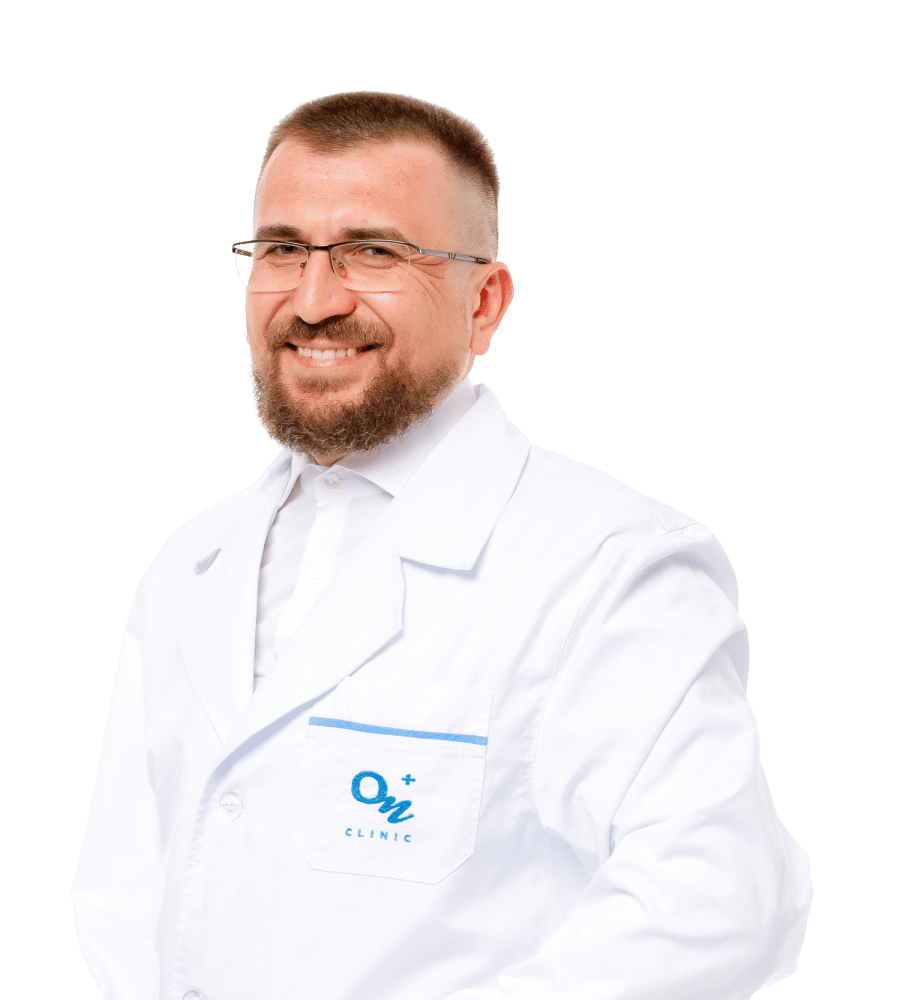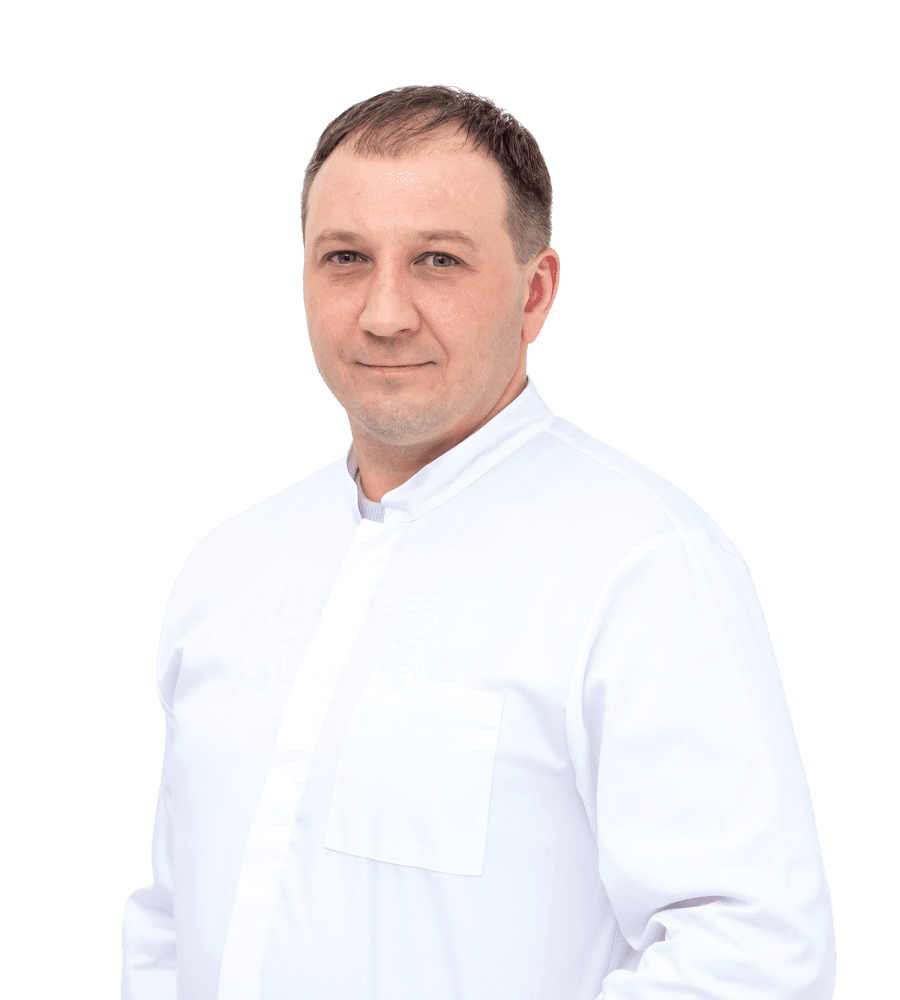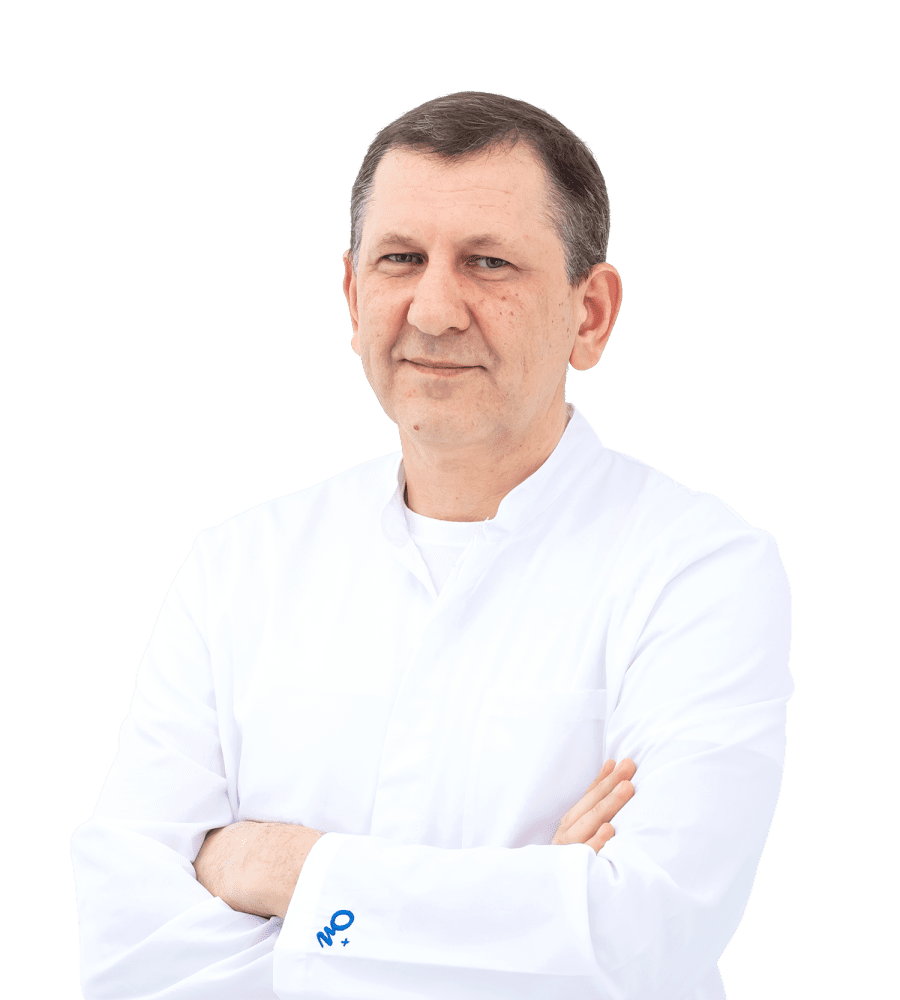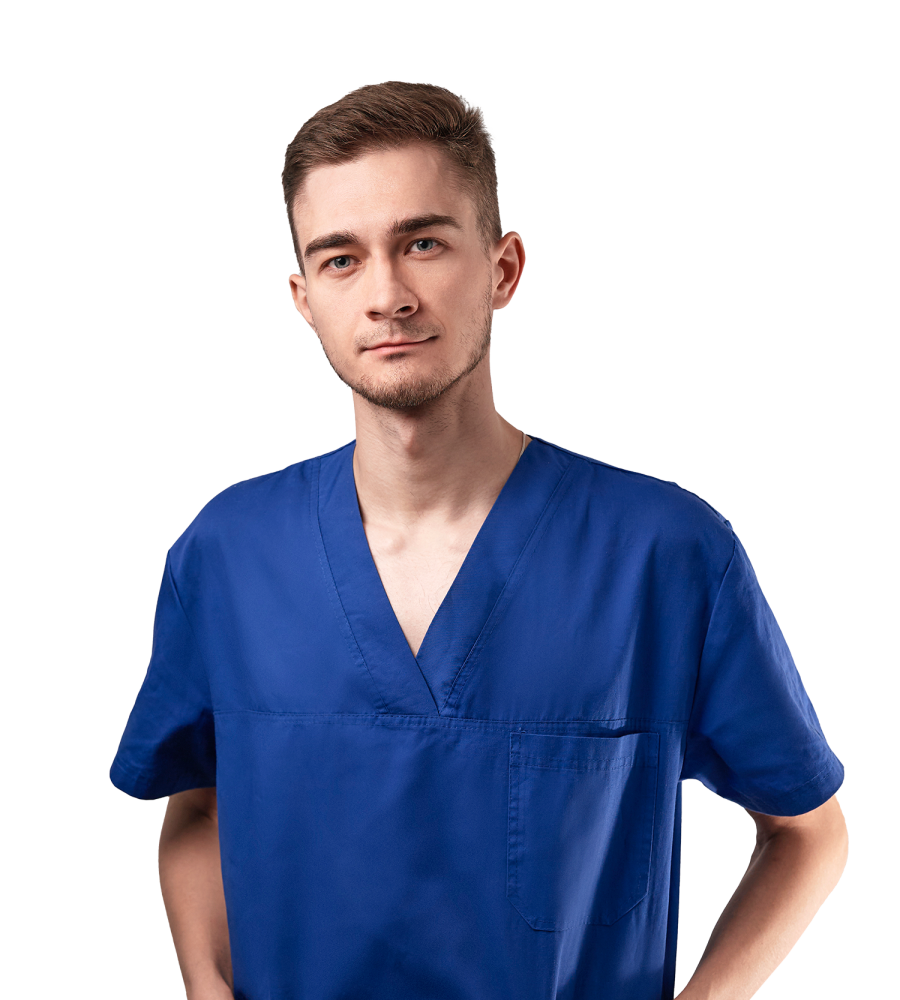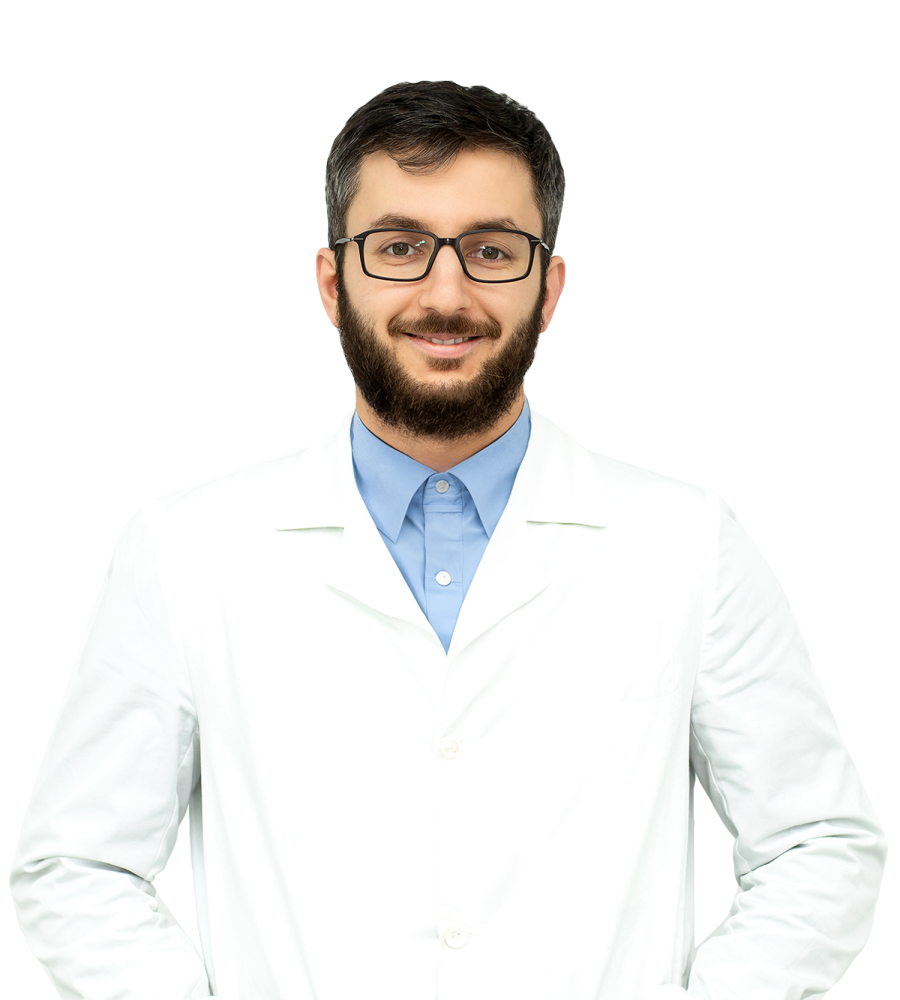Surgical treatment of prostate adenoma in Kharkov
Список выбранных услуг
Для добавления услуг с других отделений нужно закончить текущую запись.
Prostate adenoma is a disease characterized by excessive proliferation of prostate tissue. Another name for the pathology is benign prostatic hyperplasia. Since the prostate gland surrounds the area of the urethra, its enlargement leads to impaired urination and appearance of discomfort in the groin.
Prostate adenoma is a common disease among older men. According to statistics, about 70% of men over the age of 70 have prostatic hyperplasia. Every year the risk of disease development increases.
Hyperplasia of prostate is a benign tumor that is not prone to malignant degeneration. Prostate cancer is a separate disease that can occur in patients with or without adenoma. An enlarged prostate alone does not raise the risk of cancer.
The most common symptoms of prostate adenoma are:
- weak urine stream;
- stuttering urination;
- need to strain your stomach to urinate;
- false desire to urinate;
- feeling of bladder distension due to excessive accumulation of urine;
- frequent urination, especially at night;
- feeling of incomplete emptying of urinary bladder.
Signs of prostate adenoma and prostatitis are very similar - urinary disorders and pain in the groin. But acute prostatitis (inflammation of prostate gland) is caused by infection and is accompanied by fever and chills. In case of prostatic hyperplasia, there are no markers of inflammation.
The severity of prostate adenoma signs depends on the stage of the pathology development. With a significant glandular enlargement, acute urinary retention is possible, when its discharge is possible only through a catheter. Therefore, when the first symptoms of prostatic hyperplasia appear, you should contact urologist immediately. Attempts of prostate adenoma self-treatment with folk remedies, at best, will not give a positive effect, and at worst, they can harm health.
Causes of prostate adenoma development
The main causes of the prostate adenoma development include:
- changes in hormonal balance as a result of natural aging of the body and the extinction of reproductive function;
- dysfunction of testicles;
- decreased level of testosterone in blood;
- presence of prostate-specific antigen (PSА);
- zinc deficiency.
The remote causes affecting the prostate adenoma development include:
- diabetes mellitus;
- liver diseases;
- nicotine and alcohol addiction;
- sedentary lifestyle;
- improper nutrition;
- excessively active sex life;
- high blood pressure.
Stages of prostate adenoma development
There are three stages in the development of prostate adenoma:
- compensated stage is characterized by mild signs of urination disorders. Residual urine is absent or its volume does not exceed 50 ml;
- subcompensated stage is diagnosed in case of significant dysfunction of the bladder. At this stage of adenoma development, the volume of residual urine exceeds 50 ml;
- decompensated stage is characterized by complete dysfunction of the bladder and the development of disease complications.
Correct treatment of prostate adenoma begins with consultation by urologist. During the visit, a doctor listens to patient’s complaints, examines patient’s medical history, and performs rectal examination to assess the size of the prostate gland. The rest of the methods for diagnosing prostate adenoma include:
- blood and urine tests;
- transrectal ultrasound of prostate;
- ultrasound of kidneys, bladder;
- uroflowmetry is a non-invasive method for studying the main parameters of urination (volume of excreted urine, jet force, etc.);
- test for prostate-specific antigen (PSA) - prescribed for hyperplasia and prostate cancer screening. Rise of PSA levels in prostate adenoma increases the risk of cancer development.
Treatment of prostate adenoma is aimed at eliminating the symptoms of the disease, preventing the development of complications and improving the quality of life for men. It can be both medical and surgical - it depends on the stage of the pathology and the presence or absence of complications.
Treatment of prostate adenoma without surgery (outpatiently) is indicated at the first or second (without complications) stage of pathology. A patient is prescribed with medications to normalize urination and slow down the growth of prostate tissue.
To increase the effectiveness of drug therapy, a patient is recommended to follow a special diet for prostate adenoma. It is necessary to exclude sweets, fried, salty, fatty food from the diet, and also eat in small portions. When treating prostate adenoma at home with drugs prescribed by doctor, a patient needs to undergo control examinations periodically.
Surgical treatment of prostate adenoma
When the surgery for prostate adenoma is required:
- when drug therapy is ineffective;
- if prostate is too large;
- with significant impairment of urinary function.
For the surgical treatment of prostate adenoma, the technique of transurethral resection (TUR) is used. It involves removing the part of the prostate gland that is compressing the urethra. Transurethral resection is a minimally invasive endoscopic operation when there are no incisions, since the adenoma is accessed through the urethra.
A patient should not eat the night before and on the day of the operation for prostate adenoma removal; a patient should not also drink two hours before the operation. For pain relief, spinal anesthesia is used (a shot in the back, after which a patient remains conscious but the lower body is insensitive) and intravenous sedation.
A cystoscope - a long, thin and flexible tube-like instrument equipped with a video camera, a light source, and electrical loop - is inserted into urethra. The enlarged image from the camera is transmitted to the monitor. A surgeon cuts off adenoma tissue with electric loop, flushes the operating area and inserts urethral catheter, which is removed after 1–2 days.
The removed prostate tissue is sent for histological examination to confirm its benign nature. Surgical removal of prostate adenoma lasts of 1-1.5 hours in average. After the operation, a patient stays in the hospital for 2-3 days under medical supervision.
The rehabilitation period after prostate adenoma TUR lasts about a week. A patient can return to his usual life, but in the next 2 months he/she cannot make sudden movements, strain stomach and resume intimate life.
Make an appointment for surgical treatment of prostate adenoma in the medical center “ON Clinic Kharkov”. Call the specified phone number or leave a request on the website at any time convenient for you.
| Название | Цена |
| 5000 uah | |
| 600 uah | |
| 850 uah | |
| 5500 uah | |
| 4500 uah | |
| 280 uah | |
| 2075 uah | |
| Consultation of an oncogynecologist | 700 uah |
| Consultation with a surgeon | 600 uah |
| Consultation with a surgeon-endocrinologist | 525 uah |
| Consultation with an oncosurgeon | 600 uah |
| Consultation with an operating obstetrician-gynecologist | 500 uah |
| Consultation with an operating surgeon | 500 uah |
| Consultation with an operating urologist | 550 uah |
| Endocrinology surgeon consultation | 600 uah |
| Home call to a surgeon | 1800 uah |
| ONLINE Consultation with a gynecological oncologist | 700 uah |
| ONLINE Consultation with a surgeon | 600 uah |
| ONLINE Consultation with an oncosurgeon | 600 uah |
| ONLINE Consultation with an surgeon-endocrinologist | 525 uah |
| ONLINE Thoracic Surgeon Consultation | 600 uah |
| Thoracic surgeon consultation | 500 uah |
The cost of appointments surgeon in Kharkiv
Другие услуги Surgery в Kharkiv
Список выбранных услуг
Для добавления услуг с других отделений нужно закончить текущую запись.



